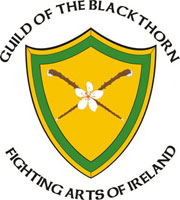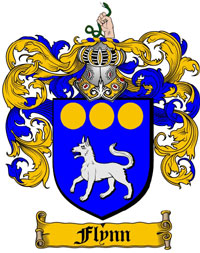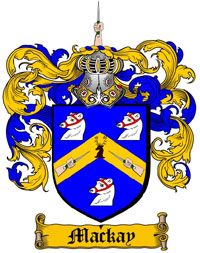For the first time ever any where I am now offering a distance learning program for the Irish stick (shillelagh) combat system of An Maide Mear.
"Maide" means stick and "Mear" means, quick, fast, swift, nimble, and spirited. In the Irish language the adjective comes after the noun.
The crests are to honor my Gaelic heritage and any and all crests that have ever been on this site have been researched in Irish Genealogical Societies. I also give honor to John who is my teacher in Ireland.
I started learning the basic Irish stick from a man named John in Ireland who gave me a great base from his family system. Since then I have been going forward by researching the old insular ways from many sources which include word of mouth through various Irish contacts and through appropriate old writings.
I have incorporated those elements that fit within the system and therefore An Maide Mear Eire is a reconstruction of insular Irish stick fighting and lore and as such is my construction. This is important as the totality of the information for the art, how it is taught and all of the techniques as a whole must be learned from me as you will not find it anywhere else. I am the head of this particular system and whether a technique is right or wrong, appropriate or not, that question can only be answered by me first and then my students as they progress through the ranks. This art is a living tradition and living things evolve and grow.
I will continue to research and uncover insular methods and bits and pieces of family arts and techniques as I speak to many people. In the future more elements might be added to An Maide Mear Eire if they fit the mold and they add a benefit to the combat, culture, art and beliefs of the Old Irish ways.




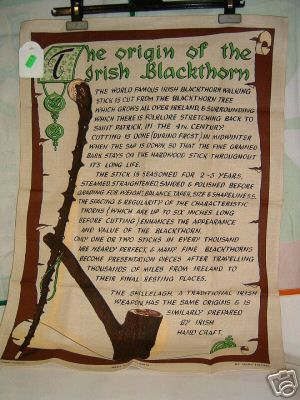
Authentic Blackthorn Stick

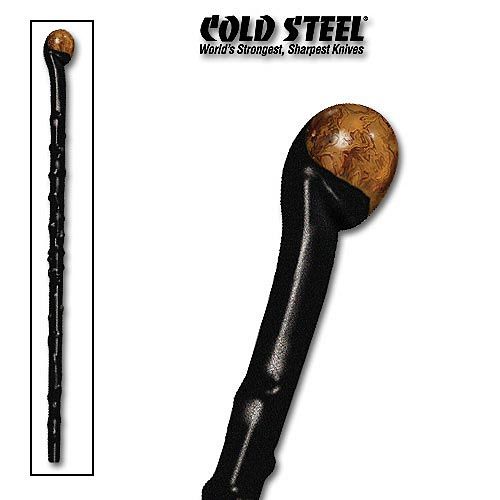
The Blackthorn
The Blackthorn tree is a member of the ROSE family (you know the symbol of our art). Not only is it a member of the rose family but it is endowed with large nasty thorns as are Roses. The Rose flower drawing in the opponent only to find they can get impaled on the thorns. Of course that is, until now just a figure of speech, we use our elbows and such to represent the thorns.
Here you really can use the thorns! It gets better. The Blackthorn tree has a flower and it is a five petal flower. Any of you that know much about the internal aspects of our Art know at once we accept five petal flowers as power plants, each petal belonging to one of the elements and animals and the last to the spirit or Naga. So this five petal flower is at the top of our list as a power plant. One need only to do a search for the Blackthorn tree to find it is filled with magical lore.
The Blackthorn that I prefer has an end that is larger and heavier than the other end, made that way by the root ball of the tree it came from and carved by the maker to his fancy. This pendulum effect you get then makes the stick perfect for poison hand wrist strikes and bone smashing hits that can end a fight with one wrist flick of a blow, not fifty. On some of the sticks some of the thorns are left partially intact or fully intact and the art makes good use of them as well when needed for raking and ripping.
Of course as in all arts there is controversy over various things like how the sticks were and should be made, bark on or bark off, varnished or oiled, blackened or not. Frankly after speaking to a variety of people in Ireland at length who have had the art of the stick making passed on to them for generations it is very clear there is no one single answer to this question.
As in all geographically separated regions in days of old, each local had its own way, its secret per say of making a good stick. My stick maker leaves some of the moisture in the stick and seals it like that, putting some oil in the head before sealing so as the water dries up a bit, by capillary action the oil from the head wicks down in the stick replacing the moisture. This came from his father and his so it is an old proven way of making the sticks. Some finish the outside with wood oil and my stick maker also does this.Some dip the stick in oil and let it soak up the oil but the problem with this method I am told by him may stem in part from the way the stick has changed. Balance and length over the years and how you want to use it.
At first the fighting stick was rather short, maybe 23 or 24 inches in length, Here one could soak the entire stick and get a decent result since it did not have a long handle that may send the balance the wrong way if too heavy. When the sticks out of necessity were made longer, upwards of 36 inches and more as the shorter sticks were banned, a new consideration was at hand.
This style of stick fighting uses a lot of wrist action and relies on the stick having a pendulum top heavy design. Saturating the stick with oil can often eliminate that effect in a long stick making the longer oiled soaked portion now the heavy end according to my stick maker.
I have no doubt in many cases he is correct as he has done it with these results he told me. So sometimes the finish has to take into account the length of a stick, and other factors so as I said I don't subscribe to the idea that there is only one way and all the makers I spoke to in Ireland agreed. If you find a way that suits you then enjoy the stick that way though. I do agree that shellac while good for sealing in moisture is not so good for banging on the sticks. While I firmly believe some in days past were probably shellacked, because that finish was in great use in Europe for wood of all kinds, gun stocks etc so it would be foolish to think no one ever put it on a stick for showing off the gloss! I believe the old smearing of butter and other external finishing oils were the preferred method however.
One type of finishing oil I like is Tung oil, although not necessarily soaked through for reasons described. I also far prefer the bark on sticks for weight and feel and of course the nubby thorn stubs that are so effective and give the stick its character. I feel removing the bark removes a certain intrinsic aspect of the stick, as I said its character and while I have one such stick it is NOT my favorite by any means.
I want to add that any person with Irish Ancestor who does the Martial arts should look at this system, especially if they already do our Silat art. You don’t need any other stick arts but the Trumbu and the Bhata to have a fiercely effective system that operates inside the Eleven Principles and with the Shillelagh blackthorn walking stick length stick you can stroll down the street with your walking cane without raising many eyebrows as you would if you were twirling Kali sticks or flashing a Nunchucka about. These sticks really bring home the message, talk softly and carry a big stick! If you are Irish and have never been interested in a Martial Art come and see this one! Once you learn it you will have no problem slipping into the Silat class if you so choose to as well. These are stick arts for fighters who want to end the confrontation FAST without learning countless angles, locks and complicated multi step attack drills that require close cooperation from your partner to work most of the time!
Also I urge all others who are lucky enough to have found a real Irish stick fighting teachers contact us so we can all stay in touch and help each other promote these very rare arts.
